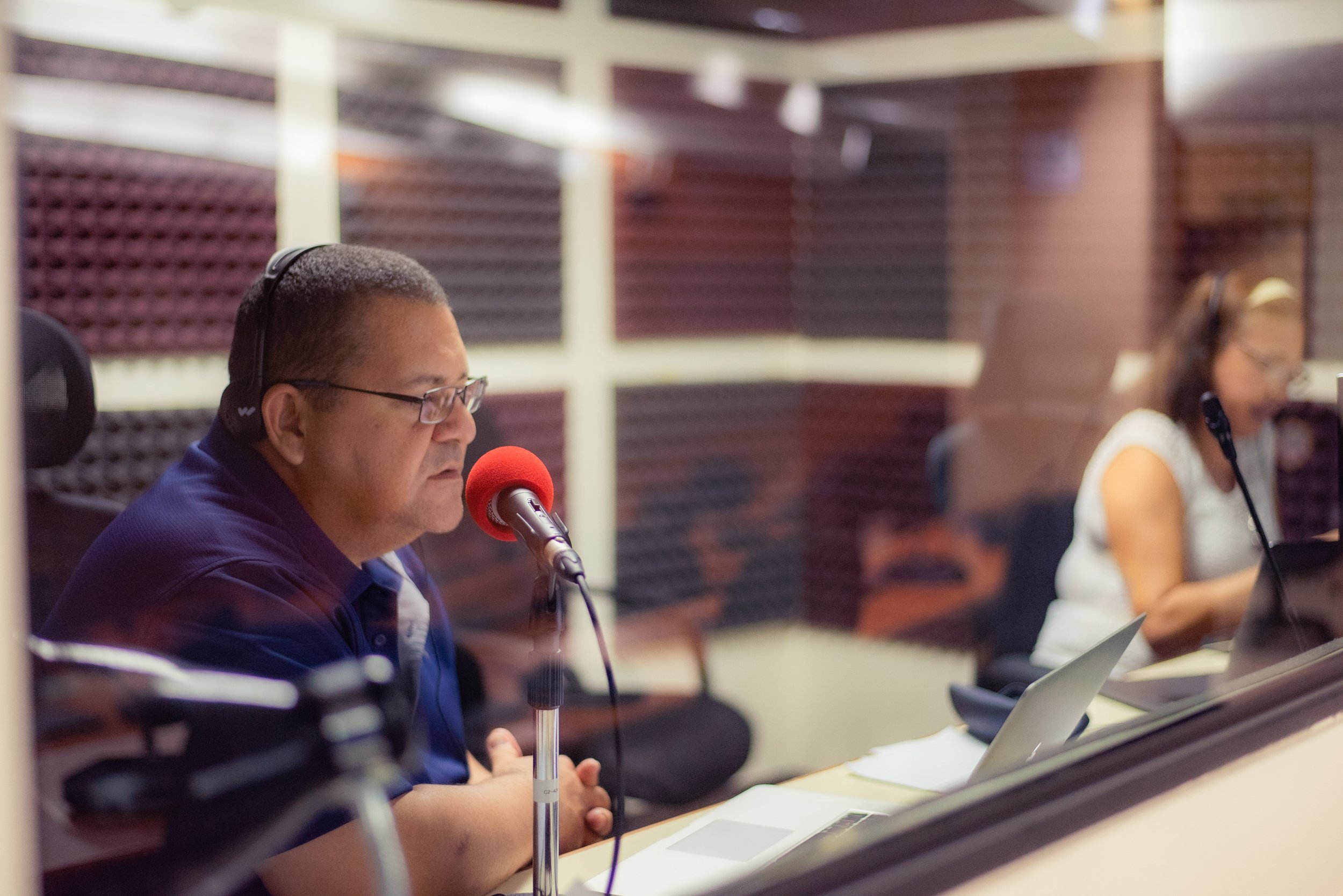By Enti Bracamonte
Posted: February 6, 2022
First of all, let me just say that I intend to elaborate as much as it is practical in all other sections of this website. This, however, is the one section where I will be succinct. So, if life is too much to bear without knowing the answers to the burning questions, here:
My name is Enti Bracamonte. I was born and raised in El Salvador, and I am a conference interpreter and translator.
I decided to create this website in order to humbly share some of the things I have experienced and learned in my journey to the ever fleeting present. I have pursued many interests over the years and, somehow, against my better judgement, despite being an introvert, I have managed to convince myself that the sporadic crumbs of half-baked knowledge I posses just might—maybe—help the next fellow along in his endeavors, if nothing else, as an example of what not to do.
(Photo by René Domínguez)
In the picture: My wife, Marisú, and I working side by side as always…
Please notice how my microphone is placed slightly off to the side, rather than directly in front of my mouth and nose. This is to prevent blowing air into the mic, which would be both annoying and distracting for the audience.
The microphone I am using in the picture is the venerable Shure SM58, the workhorse of the audio industry. Although there are many very good microphones out there ($$$$), the Shure SM58 is a serious professional microphone that will not cost you an arm and a leg. This microphone is very smooth sounding, has excellent off-axis noise rejection (polar pattern) specs and the capsule is pneumatically insulated from mechanical shocks, in order to reduce handling noise as much as possible. Although the SM58 has a very good built-in pop filter, I am not taking any chances, and I am using an additional, thicker pop filter on top jus to make sure the audience gets the clearest sound possible. You can easily transform your old SM58 into the more expensive SM7B professional studio microphone, by simply removing the internal transformer.
Also, please notice the placement of the right-side earphone behind my ear, rather than on it. I always work with my right ear uncovered. This is so I can hear my own pronunciation, intonation, and volume. If the sound quality is bad I can lift the right earphone and hold it over my ear without fully seating it—I still want to be able to hear my own voice for pronunciation, intonation, and volume.

